government law
Public safety administration 4
Kim Daejung Government
1. Organizational Changes
New organizations were introduced into the police organization under the Kim Daejung administration in a concerted effort to fight and reduce crime. These included the Cyberterrorism Center, the Narcotics Investigation Division, and the White-Collar Crime Investigation Division. In the meantime, the Investigation Division in the Investigation Bureau, a long-time subject of political controversies, was finally abolished in a move that drastically reduced the political influence of the police. The tendency to downsize the police security apparatus, which began in the Sixth Republic, continued in this period.
2. Functional Changes
The Kim Daejung administration introduced 28 new tasks into the police organization, 29 percent of which pertained to maintaining social order; 29 percent, to enhancing efficiency; 21 percent, to reducing crime; and 7 percent to improving traffic safety and ensuring fair distribution of police resources each.
The increased concern with fair distribution of police resources and providing greater services for the socially weak and marginalized was evident in the reintroduction of the Women’s Service Office in the Patrolling Instruction Division on May 23, 2011. The new office was equipped with one Chief Superintendent, two inspectors, and two lieutenants.
Cybercrime and terrorism were introduced as new targets of police control, and analyses began to be undertaken in the area of international drug trafficking. In the meantime, the categories of special and criminal law violations and white-collar crimes began to include other crimes like economic or electoral frauds and crimes related to government employees, food, the natural environment, firearms, cultural properties, smuggling, and military service.
The importance of maintaining social order was stressed by this administration as well, evident in the addition of “managing collective incidents, such as assemblies and demonstrations” to the list of existing police duties. Despite the abolition of one counter-communism division, the police organization by and large retained the same roles and tasks as before. Notwithstanding the many contributions the police made to ensuring national security, the police security apparatus continued to be resistant to citizen control and watch, continuing the clandestine nature of its operations. This emphasis on secrecy, in turn, led to the public’s questioning of the legitimacy of police security operations, and kept the police distant from civil society (Kim, 2006).
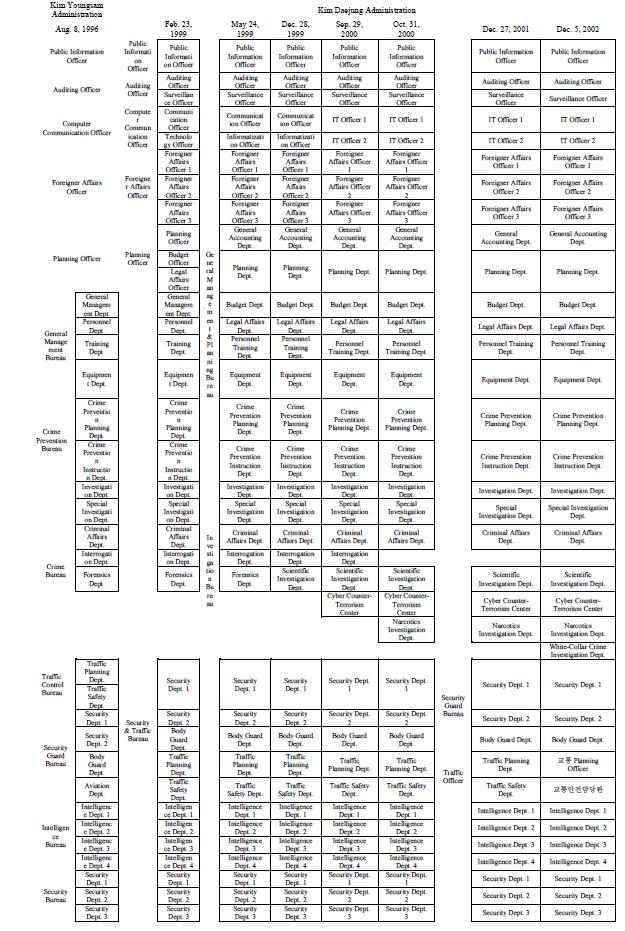
[Figure 2-8] Changes in the Police Organization under the Kim Daejung Administration
[Table 2-19] Police Principles and Aims under the Kim Daejung Administration
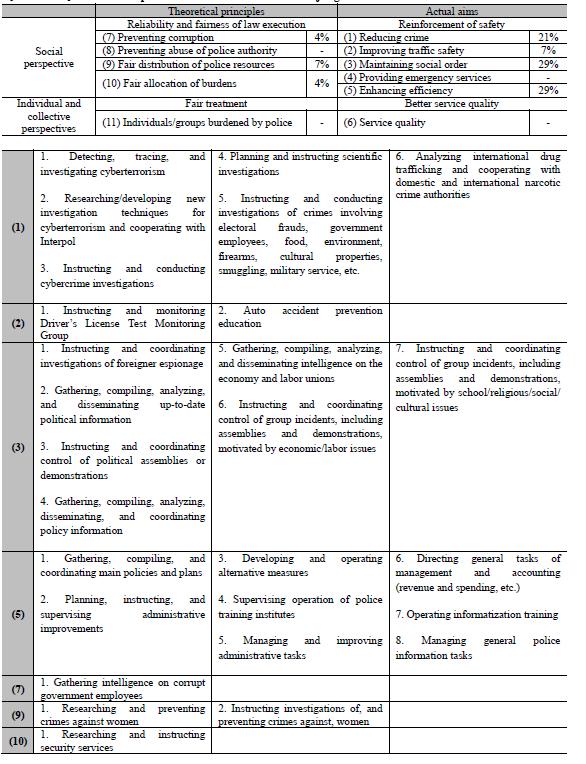
[Table 2-20] Changes in Police Functions and Tasks under the Kim Daejung Administration
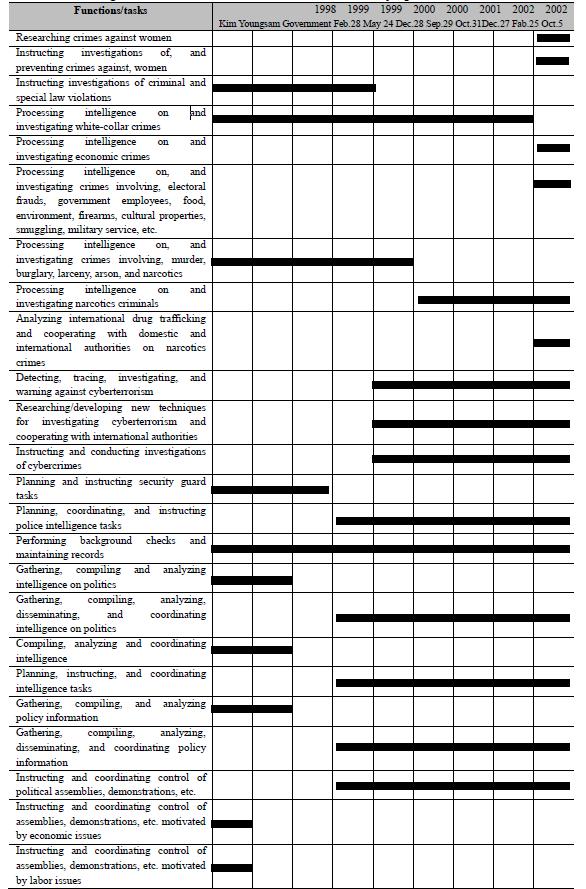
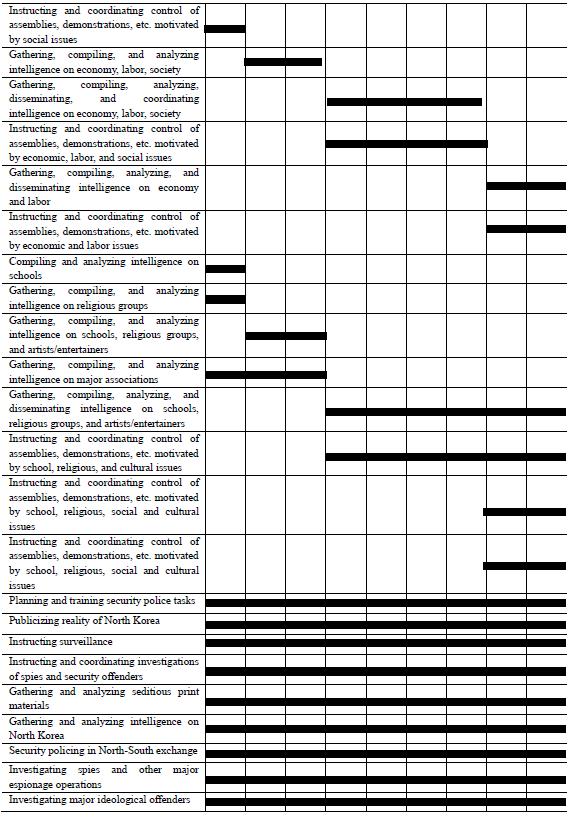
Source: Korea Institute of Public Administration. 2008. Korean Public Administration, 1948-2008, Edited by Korea Institute of Public Administration. Pajubookcity: Bobmunsa.
Roh Moohyun Administration
1. Organizational Changes
The Roh Moohyun administration began by proposing 10 major policy goals and principles, including the establishment of a peace regime on the Korean peninsula, the elimination of corruption, national integration, and gender equality. The reform of the police organization that was carried out on December 18, 2003, replaced “patrolling” with “living safety” as the most fundamental function of the police, and introduced various new measures designed to humanize the police and make them more accessible to the people. The Women and Youth Division newly came into being under Presidential Decree 18937 on July 5, 2005, for more effective handling of crimes against women and youth, including sexual and domestic violence.
The Roh administration also enacted the Code of Police Conduct for Human Rights on October 4, 2005, as Police Order 461, and introduced the Human Rights Protection Center, thus elevating the concept of “human rights” as a major principle and the guiding ideal of police activities and operations.
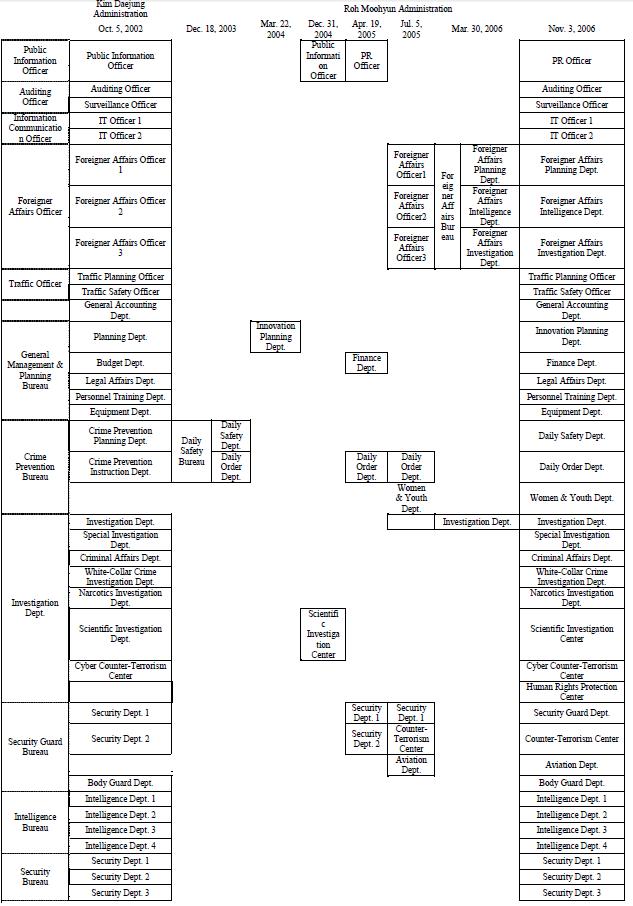
[Figure 2-9] Changes in the Police Organization under the Roh Moohyun Administration
2. Functional Changes
The Roh administration introduced 26 new tasks into the police, 40 percent of which were concerned with enhancing efficiency; 20 percent with maintaining social order and ensuring fair distribution of police resources each; 8 percent with reducing crime and preventing the abuse of police authority each; and 4 percent with ensuring fair treatment.
The Roh administration emphasized public relations, innovation, and performance as major pillars of policymaking in all areas, and consequently elevated the objective of efficiency enhancement as the top-priority issue of the police organization. In line with the overarching, government-wide policy of “maintaining a healthy tension with the press,” the police organization also gained new tasks involving the confirmation and correction of police reports in the media. The Police Broadcasting Station was also transferred to the PR department to enhance the police organization’s external online marketing and public relations. The budget for police PR increased by 33 percent in 2005, and the Police Public Relations Advisory Council was set up, comprised of 15 or so members drawn from the press, academia, and the entertainment industry who together advised the Chief of the National Police Agency (NPA) on press and public relations.
Fair distribution of police resources and services, especially for socially weak and marginalized groups, became another high-order issue for the police. The Women and Youth Division (comprised of three subdivisions) was created in the Patrolling Bureau on January 17 to ensure human rights protection in the handling of crimes against women and youth, including sexual and domestic violence and abuse. The police, accordingly, began to handle missing children/people cases, as well as cases of domestic violence, child abuse, sexual abuse, and prostitution. Advisory councils on violence against women were also set up in the NPA and 14 district police agencies. The members of these councils were professors, counselors, doctors, lawyers, and representatives of women’s advocacy groups who advised the police on how to better protect the rights of victimized women and children in their investigations into such crimes.
In the meantime, the Act on the Punishment of Sexual Violence and Protection of Victims was enacted on December 11, 2003, which obligated the police to record statements about and from children under the age of 13 and disabled victims. The new requirement was intended to prevent secondary violations of victims’ human rights that may occur in making them appear before investigative authorities and courts repeatedly, and also to ensure the consistency of victim statements.
Human rights was a key issue during this time period, especially with respect to preventing the abuse of police authority. Police investigations are rife with risks of human rights violations as they involve unwelcome interrogations of parties involved in crimes and intensive and exhaustive searches for evidence. In an effort to accord better protection to the human rights of victims, suspects, witnesses, and detainees alike, the police expanded the Crime Victims Office in the Investigation Bureau into the Human Rights Protection Center in 2005. “Managing matters of human rights protection and custody in police processes” and “counseling, investigating, and processing allegations of abuse by police officers (including CPFs)” thus became new tasks of the police organization.
[Table 2-21] Police Principles and Aims under the Roh Moohyun Administration
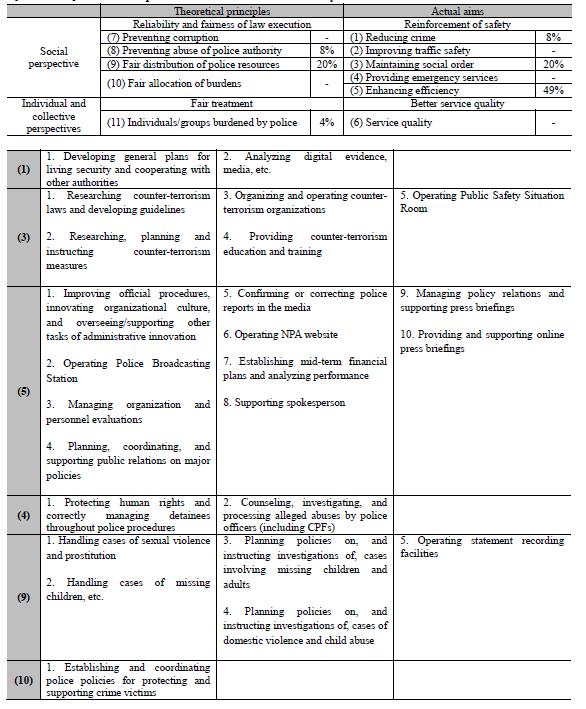
[Table 2-22] Changes in Police Functions and Tasks under the Roh Moohyun Administration
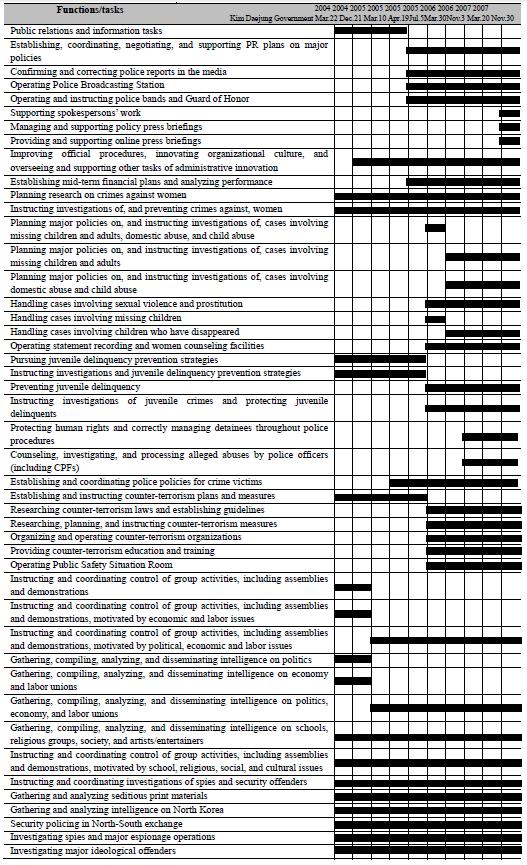
Source: Korea Institute of Public Administration. 2008. Korean Public Administration, 1948-2008, Edited by Korea Institute of Public Administration. Pajubookcity: Bobmunsa.
